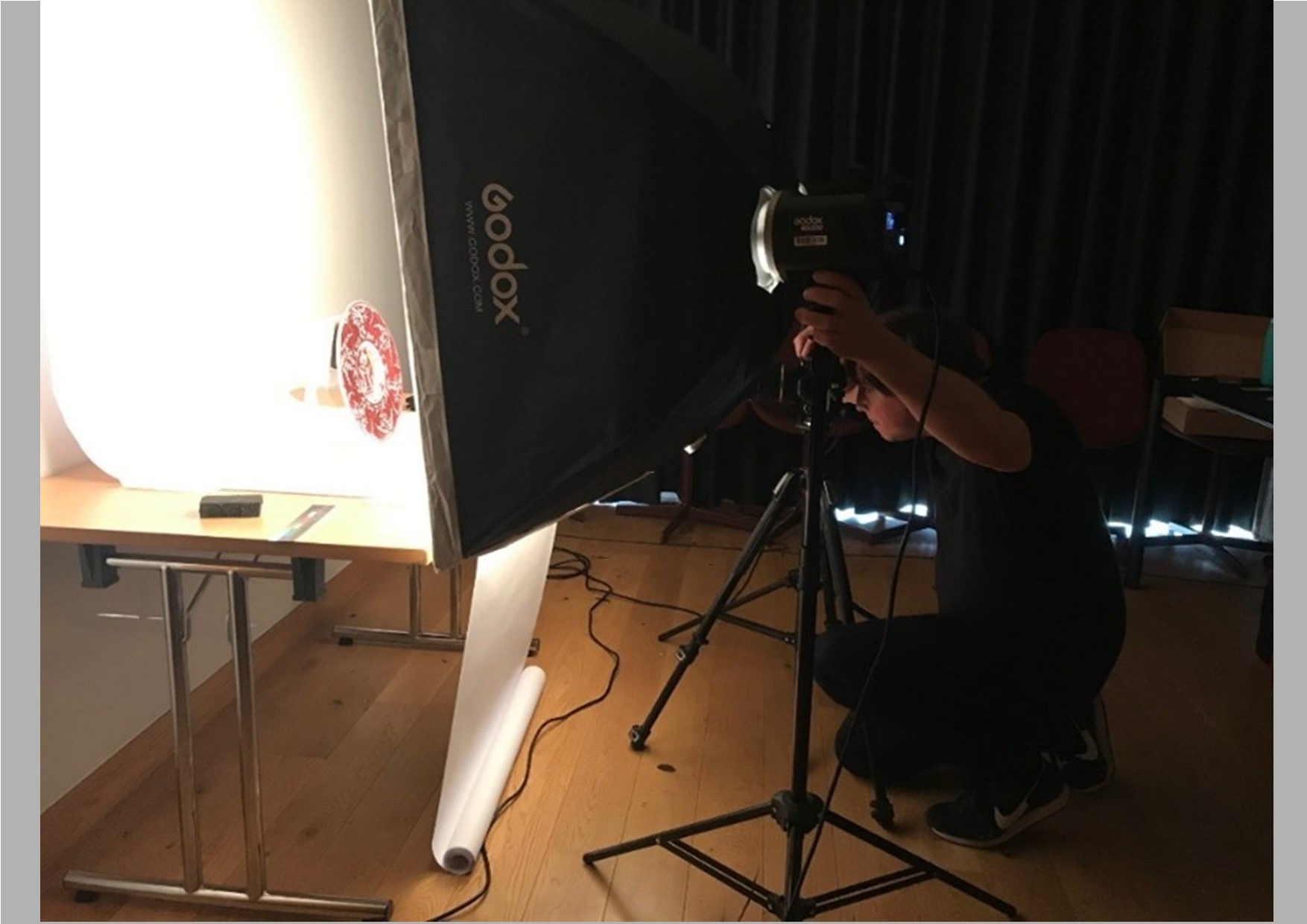
The summer holidays are a good opportunity to take items from the College’s various collections out of the Archives, from the Katharine Stephen (Rare Books) Room, and works of art off display, so that they can be professionally photographed. At the beginning of August 2022, a small pop-up photography studio was set up in a College Supervision Room; perfect due to its extremely heavy black-out curtains to allow control of the light levels (and, thankfully in the ongoing heatwave – air-conditioning!).

Object photography is just one part of the work the team undertakes to digitise our collections, so that information is held within a digital catalogue, with information such as provenance, location, maker and materials, along with images, all held in one searchable database.
The process of object photography follows fairly strict conventions, with the position of objects and background all very consistent. Our photographer was very familiar with this approach, through his work for various museums and galleries in Cambridge and Ely.
Image: Dish with Fishes and Dragons (c. 1882-8) by William De Morgan

The images that are produced are useful not only as part of our record-keeping, but for other practical reasons such as allowing us to compare the current condition of objects with earlier images, so that we can quickly check if any damage (such as fading) might have occurred. Alongside this, digital images help us to share our Collections more widely – within College (e.g. an object might be too delicate to be on permanent display), made available for researchers, and with audiences further afield – here via the College website, or social media channels.
Almost all of Newnham’s oil paintings and sculpture is already visible on the ArtUK website, which is an incredible resource for anyone interested to see art in publicly accessible UK collections.
Image: Medallion Portrait of Mathilde Blind (1898) by Edouard Lanteri


